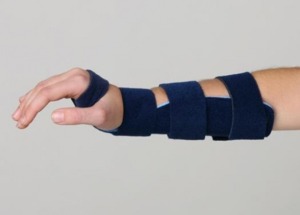A few years ago, I was with an attending who was discharged a pediatric patient. Staff in general seemed hesitant, but this was a well-loved doc who’s reply was somewhere along the lines of, “this kid looks great! Do you know how many times my kids probably had a bleed and did fine? We over CT these young things! And if he has a bleed, what are they really going to do anyway besides charge a lot of money for no appreciable intervention?”
And with that, comes this retrospective single center study of 202 children 0-18 years of age with an acute CHI, an abnormal CT (defined as both nondepressed and depressed skull fractures, subdurals, epidurals, subarachnoids, intraparenchymal hemorrhage, and intraventricular hemorrhage), and a GCS 14 or higher.
Essentially, the question is, can these patients be safely treated in an obs unit?
Exclusions were multisystem trauma, nonaccidental trauma, prior neurosurgical conditions and coagulopaths were excluded as well. 86% of patients were 5 years of age and under, and only half of all patients presented to the ED in under 6 hours. My first reaction to this was “huh?” – but the authors go on to state the 73% of patients had a hematoma, 11% had LOC, 30% vomited, 28% had a change in behavior, etc… so I guess it makes sense that there was a delayed presentation since parents may have initially thought their child was alright, only to later to suspect something was afoot (or perhaps patients were transferred to their ED from outside facilities?).
Fun sidenote: 17% of patients had no exam findings, so I gotta ask – why were they scanned? To put it another way, much like the aforementioned doc had asked- how many kids have we discharged without a head CT with clinically insignificant ICH?
So what did the authors find? ZERO children were intubated, required neurosurgical intervention, PICU admission, or died. All were discharged within 72 hours, and 86% of patients with >1 CT finding were discharged within 24 hours! Surprisingly, this is actually somewhat consistent with prior studies.
Ultimately, before starting this at your institute, note that there are some subtleties in the data- like that 25% epidurals with a repeat CT (3 of 12) showed a larger bleed. But really, looking at the data on patients that were admitted, I have to ask – which of these *really* needed an admission? None had an intervention aside from continued analgesia / anti-emetics.
Of note, this hospitals EDOU had an admission rate of 3-4 % – wayyyyy below national average of 15-20% – so either they’re sending home a ton of kids from obs unnecessarily, their ED is placing way too many in obs, or the rest of us have it wrong. Which leads me to agree with the authors on the following:
“For those well-appearing children in whom CT abnormalities are visualized, an EDOU is still an appropriate place for these patients, or should early discharge with home observation also be considered?”
Will we see a time when certain types of head bleeds are treated like low risk chest pain – accelerated protocols and an abundance of EBM suggesting early discharge? Or arranging for telemedicine to circumvent many of these transfers to tertiary care centers?

